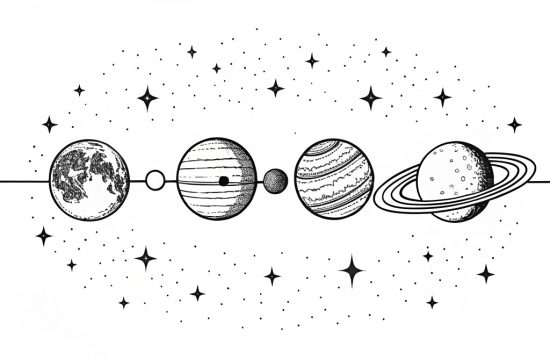The Tick Sentinel: A Remote Controlled Asteroid Defense System Against Asteroid Threats
The threat of an asteroid impact has long been a concern for humanity. While large-scale extinction events are rare, even smaller asteroids can cause significant damage. To mitigate risk, innovative defense systems are developed. One such concept is “The Tick Sentinel,” a device to intercept and alter the trajectory of hazardous asteroids.
The Sentinel’s Operation:
- Detection and Tracking:
- The Sentinel would be equipped with advanced AI to receive coordinates, task, general program information and updates.
- Its sophisticated tracking and maneuvering system might take a while to thrust around the suns orbit along timing to match the asteroid’s velocity and intercept it.
- Orbital Locking and Deflection:
- Once in proximity, The Sentinel would lock into a stable orbit around the target asteroid.
- Using powerful propulsion systems, it would then apply controlled thrust, gradually altering into asteroid’s trajectory once landed drilled and locked into it’s surface.
- This would involve very long term small pushes to achieve a large orbital change.
- The goal is to shift the asteroid’s path away from a potential collision course with Earth. A remote controlled asteroid.
Addressing the Threat: Asteroid 2024 YR4
Currently, astronomers are closely monitoring asteroid 2024 YR4. This near-Earth object poses a potential, albeit still statistically low, risk of impact in December 2032. Here’s what we know:
- Size and Potential Impact:
- Estimates place the asteroid’s size between 40 to 100 meters.
- An impact from an asteroid of this size could cause significant localized damage.
- A 40-meter asteroid is roughly the height of a 13-story building.
- A 100-meter asteroid is comparable to the length of a football field, or the height of a roughly 30 story skyscraper.
- Compared to vehicles:
- Imagine a large commercial airliner. A 100 meter asteroid, would be longer than that.
- A 40 meter asteroid is longer than a semi truck, but much wider.
- Compared to landmarks:
- The Statue of Liberty (from base to torch) is about 93 meters tall. So, a 100-meter asteroid is in that general size range.
- Compared to natural features:
- A 40-100 meter asteroid is larger than many of the world’s largest known whales.(imagine a whale crashing into earth at 16km/s!)
- High-Speed Threat:
- Asteroid 2024 YR4 travels at significant speeds. Reports show that at atmospheric entry the asteroid has a predicted velocity of 17 km/s (10mi/s).
- To put that into perspective, many times faster than a speeding bullet.
- This immense velocity dramatically increases the kinetic energy of the asteroid, meaning even a relatively small object can unleash a tremendous amount of destructive force upon impact.
- Compared to a speeding bullet:
- A typical rifle bullet travels at speeds of roughly 1 kilometer per second (km/s).
- Asteroid 2024 YR4’s velocity of 17 km/s means it’s moving more than 17 times faster than a bullet.
- Compared to Earth’s orbital speed:
- Earth orbits the Sun at an average speed of about 30 km/s.
- While the asteroid’s speed is less than Earth’s orbital speed, the relative velocity at impact would be very high. This is because the asteroids velocity is in relation to the earths velocity.
- Compared to a jet airliner:
- Commercial jet airliners typically cruise at speeds of around 0.25 km/s.
- Therefore, the asteroid is traveling nearly 70 times faster than a jet airliner.
When examining the speeds of asteroids impacting Earth, it’s essential to understand that several factors influence their velocity. Here’s a breakdown of typical asteroid impact speeds:
- Average Asteroid Speed:
- Generally, asteroids strike Earth at an average velocity of approximately 18 kilometers per second (km/s).
- Factors Influencing Speed:
- Earth’s Gravity: Earth’s gravitational pull accelerates incoming asteroids, increasing their velocity as they approach.
- Orbital Mechanics: The asteroid’s initial orbital path and its intersection with Earth’s orbit play a role in determining its impact speed.
- Type of Impactor:
- Asteroids are the most common impactors, with the aforementioned average speed.
- Comets, which have different orbital characteristics, tend to have higher impact velocities. Short-period comets average around 30 km/s, while long-period comets can reach speeds averaging 53 km/s.
- Minimum Impact Velocity:
- The minimum velocity an object can have when impacting Earth is approximately 11.2 km/s, which is Earth’s escape velocity.
Therefore, it’s not just the size of the asteroid, but its speed, that makes it a Dio or dangerous incoming object.
- Probability:
- Astronomical observations are ongoing, and the probability calculations are being refined.
- Currently, the odds of a direct hit are considered low, but not negligible. Reports say odds have been calculated to approximately 1 in 83.
- These numbers can and will change as more data is collected.
- Earth and Moon Impacts:
- As the asteroid crosses the earths orbital path, the likelihood of impacts upon the moon also exists.
- Calculating precise probabilities for impact on specific bodies such as the moon are complex, and require very refined trajectory models.
- It can be extrapolated that there is a 1 in 100 chance of impact on the moon, during the close approach of 2024 YR4.
- Ongoing Monitoring:
- NASA and the European Space Agency (ESA) are actively tracking 2024 YR4 to improve orbit predictions.
- Astronomers will have better calculations after the 2028 flyby, that will give more accurate data.
The Importance of Planetary Defense:
The development of systems like The Sentinel and the continued monitoring of hazardous asteroids are crucial for planetary defense. While the risk of a catastrophic impact may be low, the consequences would be devastating. By investing in these technologies, we can safeguard our planet from future threats.
NASA Center for Near Earth Object Studies (CNEOS). Various data on near-Earth objects. Ongoing. European Space Agency (ESA). Planetary Defence Office. Various data on near-Earth objects. Ongoing. Barringer Crater. About the crater. Barringer Crater Website. Ongoing.







